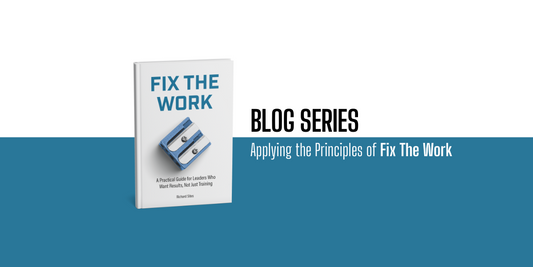Training is an Operations Function
Richard SitesShare This Post
An excerpt from UPTRAIN: An Executive's Guide to Making Powerful Training
“Training is an operations function.”
To a businessperson, that sounds like a reasonable statement. To many people in the T&D field, however, that’s heresy.
But it’s the truth. Training exists to improve (or create) quality and efficiency in the products and services your company offers.
That’s it. Write down that sentence.
There is no other reason to train your employees.
You want to help your employees be better people? Great. Give them tuition waivers to the local college. Give them days off to volunteer or to learn a new skill. Buy them an Audible™ subscription so they can listen to their favorite books.
These are worthy causes, but they have little to nothing to do with the reason you need an efficient and effective training mechanism. Herein lies the major challenge for business leaders making effective business decisions about training.
Go to Google™ right now.
Do any search on “training and development” or “instructional design,” and you will be presented with hundreds of blog posts, articles, and companies offering advice and guidance to help produce the training you “need.”
While many of these articles do provide some valuable insight into potentially effective strategies, few of them are relevant to YOUR needs (and fewer provide ways to measure YOUR challenges).
Despite that, it’s easy to get lost in this mess.
So, with all of this misinformed (or at least misguided) advice on training and performance, how does a business leader make
effective business decisions in this arena? How do you find insight regarding the need, design, and implementation of effective training?
It’s easier than you might think.
(Purpose + Product + Process) People = Power
This simple formula will give you the necessary framework to make those important training decisions, which will empower your company to perform at higher levels without breaking the bank.
This formula will serve as the guiding principle of this book (and, hopefully, it’ll serve as your newfound approach to the evaluation and execution of training).
Training, after all, is about increasing the power your organization has in the market. It’s a lever to empower operations. You can uptrain yourself and your organization by better understanding the relationship between your purpose, product, process, and people.





